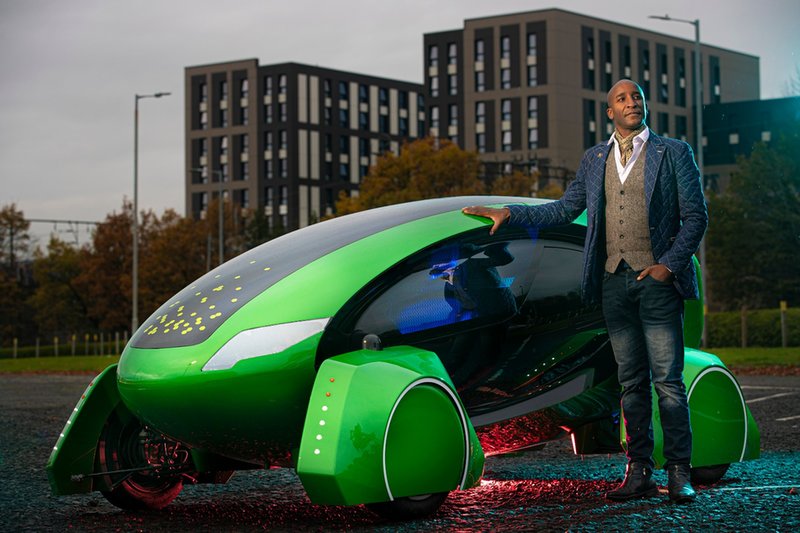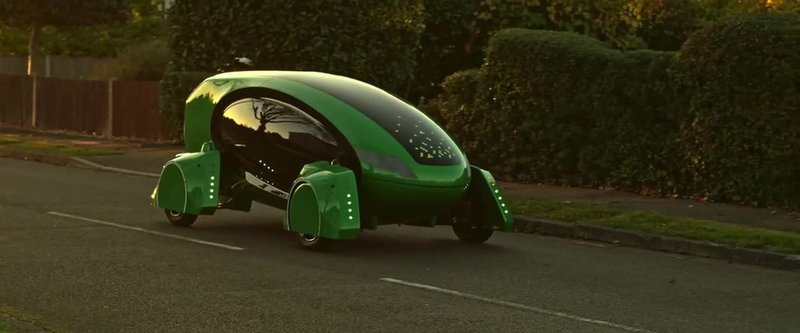Transport
Kar-go: could an autonomous robot be the new face of drug transport?
British start-up Academy of Robotics has developed an autonomous electric delivery vehicle designed to revolutionise the last mile of the delivery cycle. Dubbed ‘Kar-go’, the fleet of green pods is currently undergoing live trials on the streets of London transporting medicines from pharmacy to patient. Chloe Kent finds out more about this innovative concept.
O
ver the course of the Covid-19 pandemic, the physical world of retail has become less accessible to consumers, driving many shoppers online. This has been true not only of luxury goods, but of essential purchases like food and prescription medicines.
Ecommerce and other delivery services have historically experienced the majority of everyday operational issues due to supply and demand bottlenecks. Now, the unprecedented demand for these services caused by Covid-19 has led to an increasing number of issues in the ‘last mile’ of delivery.
The last mile refers to the final step of the delivery process when a package leaves a local depot and makes its way towards the consumer. Despite its short range, last mile delivery is the most expensive and time-consuming part of the delivery process. While an online purchase can be shipped cross-country to a local depot relatively inexpensively, it’s when it comes to moving the parcel from the local depot to the recipient’s address that things can get complicated.
This is because the final leg of the shipment journey is inherently inefficient, as couriers must make multiple stops with relatively low drop sizes. This is a problem in both the countryside and cities, albeit for different reasons; in rural areas, delivery points along a courier’s route could be several miles apart, while the congestion of urban areas leads to delays despite the closer drop points.
Academy of Robotics founder and CEO William Sachiti says: “Up to 80% of the cost of all deliveries happens within that last mile.”
It’s this 80% of expenses that the Academy of Robotics is trying to eliminate.

Sachiti and Kar-go. Credit: Academy of Robotics
Helping to deliver healthcare in Hounslow
The Academy has developed a driverless electric vehicle known as Kar-go, which is optimised to travel autonomously using artificial intelligence (AI) from final depot to final destination. Its first trial is in medical delivery, working with Hounslow East Pharmacy in London to bring medicines from the pharmacy to local care homes via a UK Research and Innovation (UKRI)-funded trial.
The vehicle, Sachiti says, represents a logical next step in the evolution of current technology. The patented algorithms inside Kar-go can learn and self-optimise in real time, to make the best decisions and ensure multiple fail-safes are in place.
The Kar-go vehicle uses these AI capabilities to drive itself between the pharmacy and the care homes.
“Say you’re going from your house to your local train station,” he says. “You can use GPS mapping software to see what route you should take and where the roads are. Imagine we capture this GPS ability and then take a camera along that route.
“The camera sees that route in the same way you would driving to the station for the first time, and then second time you don’t need GPS because you remember what you saw. That’s exactly what we’re doing. We take the visual memory layered on top of that GPS ability, and then teach an AI to drive itself from point A to point B.”
The Kar-go vehicle uses these AI capabilities to drive itself between the pharmacy and the care homes, performing parcel handover autonomously using its onboard robotics. When it arrives at its destination, a notification is sent via mobile app or text message to a member of staff, and the parcel can be retrieved from the machine, autonomously handed over using its onboard robotics.
“People might think ‘why would someone want to come outside’,” says Sachiti. “But Uber has taught us that people are more than happy running around the corner to find their taxi. If you’ve ever been expecting a package, I’m sure you’d rather run outside to pick it up in your driveway or around the corner than to get that ‘sorry we missed you’ card.”
Driving innovation ahead
Current legislation mandates that the vehicle must have a driver inside who can take over in case of emergencies on the road. Still, the vehicle is fitted with sensors to help it detect pedestrians, vehicles, cyclists, roadworks and pets, minimising the chances of an accident or the need for human intervention.
An extra layer of safety is added through a Command Hub, from which Academy of Robotics personnel have instant, secure access to remote monitoring and supervision of the vehicle while it is in autonomous mode.
Sachiti says: “I believe technology should be there when it’s needed and out of the way when it’s not. We could have delivered for one of the really big retail brands. But where can we have the most value? For me, it’s in the medical space.
“UKRI funded us to do a trial specifically on the arrival and departure of an autonomous delivery vehicle for medicines, which was perfect timing as we wanted to go medical anyway. It was always our goal to use this tech in a meaningful way.”
It was always our goal to use this tech in a meaningful way.
As the trial continues, the Academy of Robotics is looking to iron out some unanswered questions about its technology.
Sachiti says: “What we’ve actually been focusing on in these trials is something called arrival and departure. A self-driving car’s process can be broken down into three stages. The first is just driving on the road. The second is what happens when you arrive at a pickup stop – is there a double yellow line? Is there a parking space?
“There are so many variables you need to account for, and it’s the same when you arrive at someone’s house – there could be no stopping, there could be a one-way system, so how do you account for that? How do you make sure Grandma knows her medicine is outside?
“We’re doing this to get to a point where hopefully, in 18 months, we’ll know exactly where to pull up and what the procedure is if they haven’t responded to their message.”
Kar-go on the roads. Credit: Academy of robotics
What’s next for the Academy of Robotics?
Until now, the Academy of Robotics has been financed by angel investors, but the start-up has now opened its very first official funding round. Its pharmacy trial will come to a close in the first half of 2021, after which Kar-go will be trialled in a new industry, which Sachiti is as-yet unable to reveal.
But that doesn’t spell the end for AI-powered robotic delivery of medicine, especially given it’s obvious Covid-19 related benefits. By eliminating context between courier and customer, Kar-go erases a potential transmission risk.
By eliminating context between courier and customer, Kar-go erases a potential transmission risk.
As well as its Covid-19 credentials, Kar-go could be an appealing prospect for companies in charge of prescription delivery, should the time come for a wider rollout.
The electric vehicle can cover 50 to 100 miles in a single charge, a similar distance to the ground a courier could cover in a typical car, while being entirely electrically charged. Not only could this help them scrap fuel costs, but it boosts their eco-friendly credentials too.
“I think, moving forward as an industry, that medical is actually huge,” says Sachiti. “The NHS has already mastered sending out repeat prescriptions, so I think the next step is just getting a robot to send it.”
